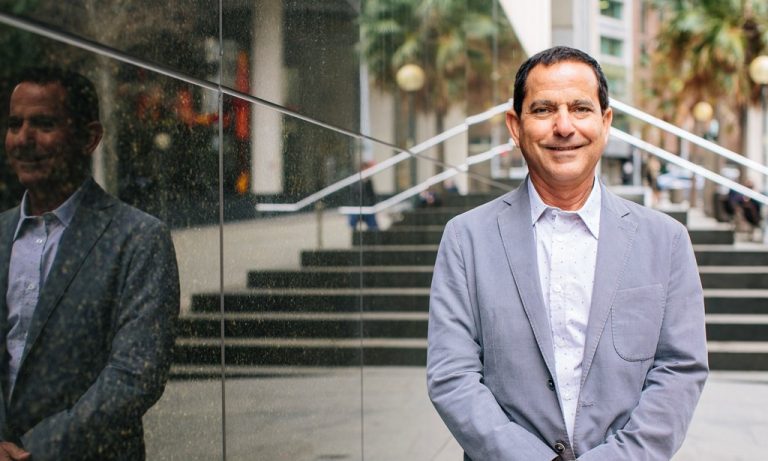
The Ulrich model of HR delivery has been the cornerstone framework of HR for the past 20 years, but in light of the newly emerging digital world, modern HR must adapt to become agile and remain effective, says Rob Scott
There is no denying that all of us are on a digital transformation journey. Our work environments and operating models are feeling the strain of being caught between more traditional business operating models and the newer, agile demands of techno-digital environments. Deciding whether to toss out the old approach or focus on a more evolutionary adaptation of your existing ways can be a daunting decision to make for HR leaders.
The Ulrich model of HR delivery, developed by Professor David Ulrich 20 years ago, has been a solid guiding framework in full or part for most HR functions globally. And even though the model has been contested over the years, the building blocks of the model; HR shared service centres (SSC) for administration, centres of excellence (CoEs) for content expertise and the HR business partner (HRBP) for business alignment, have worked – so why change something that ‘ain’t broke’?
The underlying design principle of the Ulrich model has been about effective and streamlined connectivity between the elements of HR and business operations and strategy. It was built on assumptions that were pre-digital age. But the digital work environment has introduced new technologies such as robotic process automation, cognitive computing, artificial intelligence (AI), new thinking styles such as design thinking, evidence-based decisions supported by deep-dive data analytics as well as a deluge of demographic, ethics and loyalty impacts. As HR professionals, the worse thing we can do is bury our heads in the sand and fall prey to the normalcy bias, believing things will always function the way things normally function. We need to consider how a digital environment is changing the way the workforce is empowered, interacts and connects.
“The Ulrich model as a framework is still a relevant HR operating model, but the transition from the old roles to the new ones is an important adjustment required to support digital work environments”
In a digital world, HR must respond and adapt quickly to changes which impact your business, whether that be through external competitiveness or internal innovation. This will require the roles of the HRBP, SSC and CoE to transform into ‘early warning’ detectors and predictors which can seamlessly morph into problem-solving guru’s and inform the creation of relevant and unique HR solutions. How should these roles change?
HR business partner » alignment agent
Modern HR technology, digital and automation tools fully empower line managers to be effective in hiring, managing and developing their staff. It’s time to get beyond playing the quasi-admin role for line managers. The alignment agent is externally focussed around your organisation’s supply chain and customers, ensuring HR solutions are adding customer-focussed value in line with business strategies and advising line managers and executives on required changes. The new alignment agent is seeking out business issues from a people perspective and doing problem-solving with data analytics.
Shared service centre » analytics engine room
As automation and robotic processing takes over administrative tasks and AI replaces more complex HR admin tasks, the admin centre becomes obsolete but is reborn as an analytics engine room that supports business problem solving and provides predictive capability to business leaders. Their outcomes inform future HR solutions. The future SSC employee is a data scientist or analyst. The engine room is not HR centric only, but can be part of a broader analytics entity or could be an outsourced service.
Centre of excellence » HR solution provider
The new CoE will still require deep-skilled and experienced HR practitioners who will remain the thought leaders for appropriate people practices. They will be responsible for developing and deploying solutions which are identified by the new alignment agent and use data-driven outcomes from the analytics engine room to validate their solutions. Solutions are not always standardised and can be focused on providing the best solution for a part of the business.
The Ulrich model as a framework is still a relevant HR operating model, but the transition from the old roles to the new ones is an important adjustment required to support digital work environments. It requires forward thinking executives and HR leaders to recognise the different demands of a future workforce and workplace, and an acknowledgement that technology, applied in the right way, is empowering employees and workplaces to be super-agile, and achieve significantly more. HR must change.
Some key takeaway messages
- The classic Ulrich model of HR has been the cornerstone of HR delivery for most organisations. It’s a good model, but it needs to be aligned to the emerging digital work environment
- Much of what HR business partners and HR shared services centres do is administrative in nature. The available HR software, automation and AI tools now available will completely change how these mundane activities are done. The Ulrich-defined roles must adapt
- The old HR business partner role needs to drop the line manager ‘hand-holding’ style of management – modern HR tools make line managers completely self-sufficient
- Shared services as we know it will disappear as administrative tasks are automated or managed by AI. A major skill refocus is needed to change these entities into analytic engine rooms
Image source: iStock


